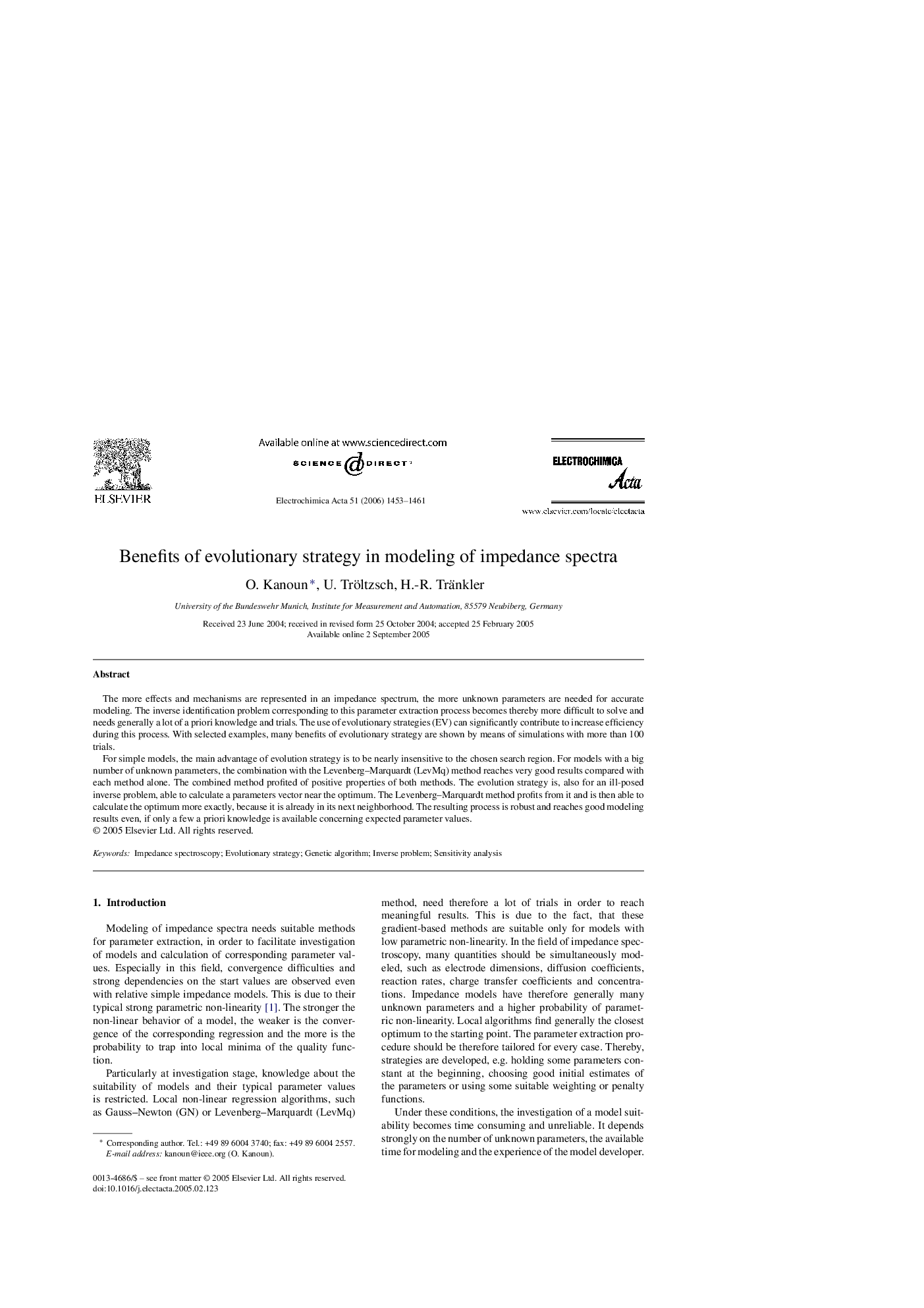| Article ID | Journal | Published Year | Pages | File Type |
|---|---|---|---|---|
| 195602 | Electrochimica Acta | 2006 | 9 Pages |
The more effects and mechanisms are represented in an impedance spectrum, the more unknown parameters are needed for accurate modeling. The inverse identification problem corresponding to this parameter extraction process becomes thereby more difficult to solve and needs generally a lot of a priori knowledge and trials. The use of evolutionary strategies (EV) can significantly contribute to increase efficiency during this process. With selected examples, many benefits of evolutionary strategy are shown by means of simulations with more than 100 trials.For simple models, the main advantage of evolution strategy is to be nearly insensitive to the chosen search region. For models with a big number of unknown parameters, the combination with the Levenberg–Marquardt (LevMq) method reaches very good results compared with each method alone. The combined method profited of positive properties of both methods. The evolution strategy is, also for an ill-posed inverse problem, able to calculate a parameters vector near the optimum. The Levenberg–Marquardt method profits from it and is then able to calculate the optimum more exactly, because it is already in its next neighborhood. The resulting process is robust and reaches good modeling results even, if only a few a priori knowledge is available concerning expected parameter values.
